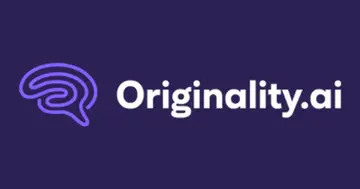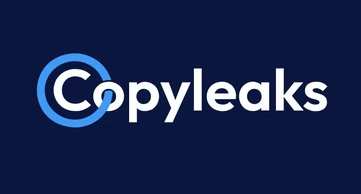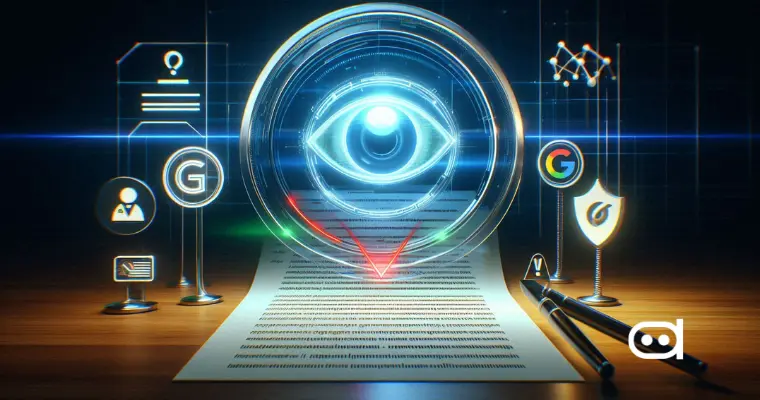
5 Best AI Content Detectors for AI-generated Text in 2025
AI content detectors are highly sophisticated algorithms that analyze text to see whether it was written by someone or by an AI. Such detectors examine words, phrases, and other stylistic details to detect the distinctive features of AI-generated content. This technology is crucial, particularly in a world where the widespread distribution of AI text necessitates the delivery of high-quality and authentic content. Recognition of AI-generated content helps combat misinformation and disinformation, ensure intellectual property protection, and enforce regulations. By filtering out spam, stolen, or misguided content, AI detection tools allow users to set more high-quality, reliable standards in internet content. The best AI detector tool offers advantages to teachers, publishers, and anyone who cares about the credibility of the content. Here, we will examine five of the most frequently employed AI-generated content detectors in 2025.
Key Takeaways
- Our users will learn about potential AI-generated content detectors, their workings, the technology behind them, and the features they look for to identify AI-generated text.
- You can see why AI detections are crucial to keeping content authentic, preventing misinformation, and securing intellectual property.
- Users will appreciate the practical benefits and features of such tools, such as increased content quality, trustworthiness, and regulation compliance.
- Users will be able to learn how to choose the right AI detection tool and how to use it efficiently, answering questions like “What is an AI detector?” “Why do you need it?” and more.
Best AI Detection Tools Explained
| Name of the Tool | Best For | Prices | Platform Compatibility |
|---|---|---|---|
| Originality.ai | Detecting AI-generated content within text | The pay-as-you-go plan starts from $30, Pro starts at $12.95, and Enterprise starts from $136.58 | Integrates with various content management systems and platforms |
| Copyleaks | AI content detection | Starts from $7.99 per month. Plagiarism Checker: $8.99/month AI Detector: $7.99/month |
Google Chrome (recommended) Microsoft Edge, Apple Safari |
| ZeroGPT | Detecting AI-generated text across various platforms | Free: $0/mo
Pro: $9.99/mo Plus: $19.99/mo Max: $26.99/mo |
Compatible with any device that can access a web browser |
| Scribbr | AI Content detector and plagiarism checking | Proofreading and editing services start at $161 a page | Scribbr is compatible with various programming languages and platforms |
| Winston AI | Detecting AI content in text | Starting from Essential plan $12/month to Elite plan $32/month | WebCompatible with a range of AI writing tools, including ChatGPT, GPT-4, and Google Gemini |
Let's explore the best AI content detectors in detail:

Introduction
Originality.ai is an AI content detector for publishers, agencies, and authors that provides a full-featured content authenticity suite. Although it offers AI detection, plagiarism detection, and fact-checking, it necessitates a credit card subscription and is not suitable for students. The platform offers three AI detector options (Lite, Turbo, and Multi-language) for a wide range of applications and tolerance levels to AI-based content.
Key Feature
- Always tops the independent AI detection accuracy tests
- Uniquely recognizes articles copied using software such as Quillbot
- Scans entire sites for ad-free content with a single click
- Manage teams, scan history, and publish results, with no limit on character size, tags, and API support
- The system achieves industry-standard false positive rates (less than 1% for Lite), thereby preventing false positives from identifying the human-written content. Offers AI detectors to combat infrequent false positives
- Lite (98% false positive, 99%+ accurate, strong against cheats) and Multi-Language (15 languages)
Pros & Cons
- 100% plagiarism and AI detection
- Effective detection of paraphrased content
- User-friendly interface and comprehensive features
- Multiple pricing plans to accommodate varying budgets
- There might occasionally be a misinterpretation of quotes or technical information
- Limited grammar and spell-checking functionalities
Pricing
Originality.ai is priced in three pricing models:
- Pay-As-You-Go ($30 for 3000 credits)
- Pro ($12.95/month for 2000 credits)
- Enterprise($136.58/month for 15000 credits and API).
The credit structure is customizable depending on content volume requirements.

Introduction
With over 30 million scans, Copyleaks is a plagiarism and AI detection tool that is utilized in over 100 countries by 1,000+ institutions and 300+ enterprises. It offers a comprehensive suite of AI detectors designed to ensure content originality and authenticity.
Key Feature
Copyleaks stands out due to several key features:
- This first-of-its-kind, patent-pending technology not only identifies AI-generated content but also elucidates its identification, offering significant insights into AI patterns and traces.
- Its customizable API allows seamless integration into various platforms, offering scalable solutions and tailored reporting for organizations.
- Copyleaks easily integrates with Learning Management Systems (LMS), empowering educational institutions to promote originality within their learning environments.
- Prioritizing data security and privacy, Copyleaks is GDPR compliant and holds SOC 2 and SOC 3 certifications, ensuring the highest levels of protection.
Pros & Cons
- User-friendly interface
- Rapid scanning speed
- Supports multiple languages
- Detects AI-generated content
- Handles various file formats
- Integrates with LMS platforms
- High level of security and compliance
- Potential for inaccurate results/false positives
- Pricing structure may be restrictive for some users
- Limited functionality in the free version
Pricing
Copyleaks offers various plans:
- AI + Plagiarism Detection ($13.99/month)
- Plagiarism Checker ($8.99/month)
- AI Detector ($7.99/month)
- customized Enterprise & LMS solutions.

Introduction
ZeroGPT is a powerful AI content detection framework designed to identify GPT-4, ChatGPT, and other models that produce text. It has a straightforward, trustworthy system for identifying artificial content, and it offers other writing aids.
Key Feature
ZeroGPT stands out with a few unique aspects:
- Promptly highlights AI-selected sentences in a text, showing the percentage of AI words.
- The tools include a plagiarism checker, paraphraser, AI content checker, summarizer, grammar checker, translator, and writing assistant.
- Uses a multilingual, fully automatic AI detection model to provide an extremely accurate AI detector and good performance.
- Prints PDF reports for each detection—verifiable evidence of non-AI or non-piracy content.
- Correctly detects A.I. in several languages.
- The system uploads multiple files simultaneously for effective analysis.
Pros & Cons
- Cost per word scanned: cheaper than other brands
- Comes with additional handy writing utilities (AI translator)
- Offers a free AI content detector version for minimal use
- High accuracy claims (98%)
- Some tools will not be as accurate as others
- There is no information available about its internal workings or accuracy levels.
- Lacks a team-sharing report feature
Pricing
- Free : $0/mo
- Pro: $9.99/mo
- Plus: $19.99/mo
- Max: $26.99/mo
Pricing is determined by word count.

Introduction
Scribbr is an academic support platform that includes a proofreading, plagiarism, and citation generator, an AI detector, and a knowledge base. The platform’s design aims to assist students and scholars in generating quality research.
Key Feature
Below are some of the most useful aspects of Scribber:
- Scribbr offers you proofreading and editing services from academic editors to ensure perfect and error-free writing—grammar, style, and spelling.
- A plagiarism checker is used to identify accidental plagiarism and rectify work before publishing. It matches up with a database of thousands of sources.
- Scribbr’s citation generator makes it easy to produce the right APA citations and save yourself hours of formatting references.
- This option filters text generated by artificial writing machines for academic honesty and novelty.
- A handy guide to many aspects of academic writing, such as style and citation techniques.
Pros & Cons
- Reduces plagiarism risk
- Improves writing quality
- Saves time with citation generation
- Provides expert editing and proofreading
- The tool can be expensive
- This could potentially hinder the process of learning how to write independently.
Pricing
Scribbr’s pricing varies tremendously with the selected service. For instance, professional proofreading and editing starts at $161 a page. Other providers, like plagiarism checkers, have their own pricing models.

Introduction
Winston AI is the most accurate AI content detector, boasting a 99.98% accuracy rate. It flags content from different AI models such as ChatGPT, GPT-4, and Google Gemini. Suitable for instructors, SEO professionals, and writers, Winston AI provides content integrity and originality.
Key Feature
Here are a few important features:
- Detect AI-generated content from AI models such as ChatGPT, GPT-4, and Gemini with 99.98% accuracy.
- It eliminates text from images and documents, expanding the scope of detection beyond mere text input.
- Relocates potential AI-generated parts in the text for easy reading.
- Features in-depth reports, with breakdowns and scoring, printable for documentation.
- Facilitates credit sharing and group utilization to enhance team productivity
- Indicates how human-written the text appears to be.
Pros & Cons
- High accuracy in AI detection
- OCR support is available for image and document extraction
- Team collaboration is rewarded with group credits
- Detailed reports and an intuitive interface
- Limited language options (only English and French)
- No plagiarism checking in the free version
Pricing
Winston AI offers a limited free AI detector version. It offers three paid plans:
- Essential ($12/month)
- Advanced ($19/month)
- Elite ($32/month)
Each offers higher features and usage allowances. The pricing models are flexible and adapt to various needs and usages.
Quick Guide On Best AI Detection Tools
What is an AI Text Detector, and Why Do You Need It?
An AI text detector is software that uses artificial intelligence to scan a text and determine whether it was written by a person or an algorithm. It flags up possible copyright or automated material and checks the reliability of the text. This is essential to combating fake news and maintaining academic integrity.
AI text detectors function by analyzing text morphology—sentence structure, word choice, stylistic peculiarities—against a catalogue of previously identified AI outputs. This synthesis shows the likelihood of AI authorship.
AI text detection is a requirement in many domains. Schoolteachers deploy it to check student work for AI-based misinformation and preserve academic quality. Creators use it to prove authenticity. Fact-checkers use it to counter online lies.
AI detection is useful in various industries. Teachers review the textbooks; reporters proofread the stories; advertisers check the authenticity of the content; lawyers review the legal papers; social media filters the AI-inspired spam; research universities maintain the quality of their data. Finally, if authenticity and originality are the most important factors, an AI detector is a must-have tool.
How Do AI Content Detectors Work?
AI content detectors are built with cutting-edge tools such as machine learning and natural language processing (NLP) to separate human-written content from artificial writing. These are tools that use various linguistic traits to detect patterns in AI-written content.
The AI text detection tool operation includes matching input text to an encyclopedia of known AI-generated data. That comparison is an exercise in similar sentence form, words, and style. Any discrepancy between the entered text and the style of human scribbling issues a warning. The more stark these anomalies, the more likely AI authorship.
These AI text detection packages employ several methods. It also creates language models, which, like the machines that drive AI writing, determine the likelihood that a text will be written by AI. Measures such as perplexity, which measures how unclear the text is, and burstiness, which measures longer or shorter sentences and difficulty, are also taken into consideration; lower scores suggest AI writing.
Next, n-grams are used to analyze the number of word sequences. Simple arrangements hint at generating AI. Finally, cross-reference to third-party databases and analysis of context tell you whether the text belongs in its place or not. The combination of these approaches makes for a more precise and stable analysis.
How To Choose An AI Detection Tool?
Here are some tips for selecting the best AI content detection tool.
As the need for detecting AI-generated content grows, it necessitates the development of effective content detection mechanisms. To identify and process properly, choosing the right tool involves thinking carefully about a few considerations.
Detection accuracy
Accuracy is paramount. Look beyond simple advertising to independent comparisons and testimonials. It needs a high detection rate to verify that the tool correctly recognizes AI-generated text. A small false positive rate is also important for avoiding misidentifying human-written content. AI detector tools that allow for open testing and publicly downloadable accuracy metrics provide more assurance.
Ease of use and integration with CMS
The tool’s interface should be simple to understand. Easy integration with your existing content management system (CMS) automates the process. Think about bulk uploading, automatic reporting, and easy-to-read reports. An intricate tool hinders productivity, but a simple interface maximizes it.
Advanced features
For more sophisticated scenarios, you can look at specialized AI model detection (GPT-3, Bard, etc.), detailed analysis reports (with reasons for detection), and APIs to integrate into your current workflows. If you want to identify a particular kind of AI output, or you need data to conduct some research, then the advanced detection features are the best.
Pricing models and availability of free trials
Pricing models vary significantly. Look at everything from free tools with restrictions to paid services with different levels of features and limits. Almost every tool has free trials that you can use to evaluate the performance and ease of use before you purchase. Select a pricing structure and feature set that are suitable for your spending and usage requirements.
How Accurate Are AI Text Detector Tools?
AI text detector tools have become increasingly popular for identifying machine-generated content. While they provide valuable insights, their accuracy depends on algorithms and training data. These tools often struggle with nuanced, highly edited text or hybrid content. Regular updates and advancements are vital to enhance their reliability for precise content analysis.
How AI Content Detectors Support Different Users
Educators
AI content detectors help teachers to preserve the academic integrity of their teaching by rapidly and effectively flagging AI content in student essays and assignments. This guarantees that the submission reflects the student’s own knowledge and effort, allowing for a more equitable and precise assessment of learning.
Content Creators & Writers
Writers and bloggers utilize AI content detectors to assure originality while also protecting their own style and voice. By avoiding artificially created content, they avoid being inauthentic and imitating others, earning the trust of their audience and maintaining professional integrity. These are the tools writers employ to hone their craft and deliver human-written texts.
Businesses
Business owners can check how AI content detectors are helping them create marketing content to safeguard brand integrity and creativity. They design marketing materials, websites, and communications to communicate the company’s individuality and resist the trap of generic-made, artificially written AI words. Staying fresh helps retain brand loyalty and the reputation of the business.
Students
Students can use AI content detectors to self-check if they are plagiarizing their material or not. It prevents accidental copying in advance and encourages beneficial academic practices. Moreover, it can enhance students’ writing skills by identifying topics that lack originality or interest and encouraging improved writing habits and abilities.
Can Google Really Detect AI Content?
Wanted to know can Google detect AI content? Google would have sophisticated NLP and machine learning algorithms in place to flag AI material, checking for things like sentence structure, words, and syntax. AI detectors are also consistent with Google’s interest in high-quality, original content because they enable creators to locate AI-generated texts that could violate regulations. This helps to create human-written content that adds value and meets Google’s requirements for search rankings.
Future of AI Content Detection: Shaping the Digital Industry
The way AI content detectors are shaping the digital industry will fundamentally alter our approach to creating, reading, and trusting online content. New trends indicate far greater accuracy and granularity than ever before, from AI/human-generated text categories to the identification of specific AI-generated parts of text. Explainable AI (XAI) will bring transparency and trust by providing the logic behind detection flags.
Multimodal analytics will expand beyond text to include images, videos, and audio, assisting in the fight against deepfakes and other manipulative media. Developers can incorporate subtle identifiers into AI-generated content, making it easy to identify, thanks to the proactive nature of the new watermarking technology.
The use of real-time detection will only become more important as AI creation increases, allowing platforms to respond rapidly to content problems. Adaptive algorithms will be the key to staying ahead of new ways to create AI.
This evolution will fight fake news, secure intellectual property, and promote more human-generated content. For content producers, it’s going to require some retraining to produce meaningful, human-written content. However, there are still struggles between AI production and detection, the necessity to minimize false positives, and the moral dilemma of detection vs. user privacy.
Final Thoughts
AI detector tools will continue to change in a constantly evolving competition with the ever-more advanced AI generation methods. Future improvements in accuracy, explainability, and multi-modal analysis are likely to address the challenges of advancing AI models. The significance of these detectors cannot be overemphasized; they are crucial to maintaining huma-written content authenticity, countering fake news, ensuring academic honesty, and securing intellectual property. By guaranteeing content originality, they protect information’s integrity in the online world.
FAQs
What is an AI content detector?
AI content detectors employ AI and machine learning algorithms to classify web content, such as hate speech and fake news. These tools are critical for online safety and content filtering, and they are constantly improving in their ability to combat new and evolving threats.
How reliable are AI detection tool?
AI detection instruments exhibit a wide range of validity. Some premium AI detectors can achieve an accuracy of up to 84%, which is comparable to the accuracy of human writing. Generally, AI detection tools perform well, but their effectiveness varies depending on the specific tool and the content you are searching for.
How accurate are AI content detectors?
AI content detectors exhibit varying success rates, typically detecting 70-90% of copied content but overlooking subtle situations. Precision relies on the quality of training data, algorithm complexity, and periodic updates.
How does an AI content detector help in content marketing?
An AI content detector assists in content marketing by identifying AI-written content, enabling marketers to determine whether their published content is genuine, relevant, and created by a human author. This preserves brand value and prevents the overuse of artificially generated content, which lacks credibility and engagement.
Are AI content detection tools compatible with CMS platforms?
Yes, many AI content detectors can be integrated with CMS systems, allowing users to directly query CMS content to evaluate for AI-related text via API integrations or plugins that scan CMS content. However, the level of integration and functionality will vary depending on the CMS and AI content detector used.
- Key Takeaways
- Best AI Detection Tools Explained
- Quick Guide On Best AI Detection Tools
- What is an AI Text Detector
- How Do AI Content Detectors Work?
- How To Choose An AI Detection Tool?
- How Accurate Are AI Text Detector Tools?
- How AI Content Detectors Support Different Users
- Can Google Really Detect AI Content?
- Future of AI Content Detection
- Final Thoughts
- FAQs
SHARE














